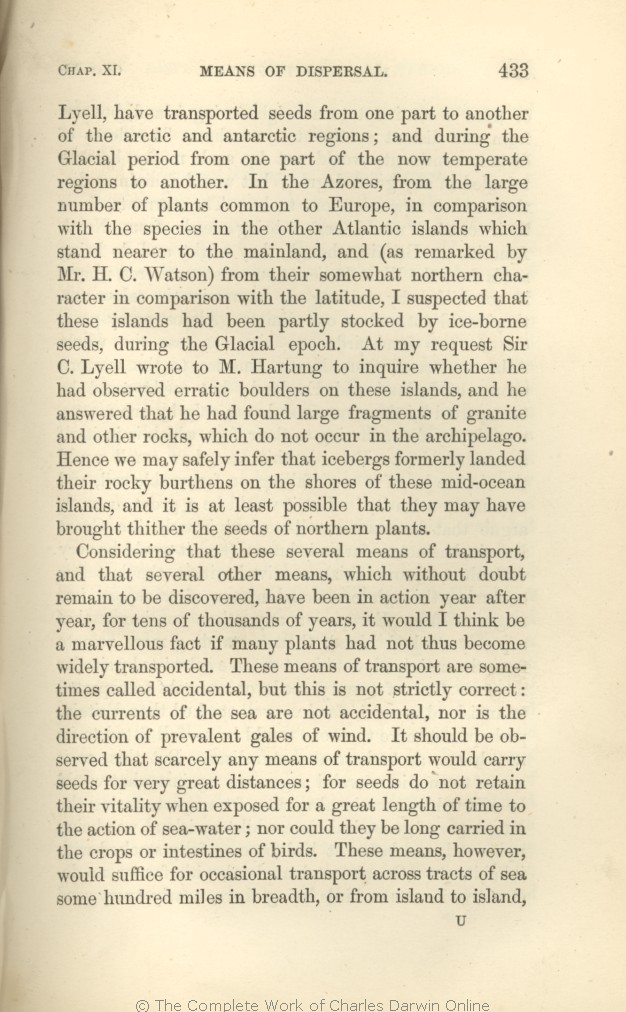one part to another of the arctic and
antarctic | antarctic 1859 1860 1861 1866 1872 | | antaretic 1869 |
| regions; 1866 1869 1872 | | regions, 1859 1860 1861 |
| OMIT 1866 1869 1872 |
| as suggested by Lyell; 1859 1860 1861 |
| OMIT 1866 1869 1872 |
| the species of 1859 1860 1861 |
| species in the other Atlantic islands which stand 1866 |
| plants of other oceanic islands 1859 1860 1861 |
| species in the other islands of the Atlantic, which stand 1869 |
| species on the other islands of the Atlantic, which stand 1872 |
| their 1866 1869 1872 | | the 1859 1860 1861 |
| OMIT 1866 1869 1872 |
| of the flora 1859 1860 1861 |
| Mr. 1866 | | M. 1859 1860 1861 1869 1872 |
| the 1859 1860 1861 1866 1869 | | some few 1872 |
|
|
Considering that
these | these 1861 1866 1869 1872 | | the 1859 1860 |
| ..... 1861 1866 1869 1872 | | above 1859 1860 |
| several 1859 1860 1861 1866 | several 1869 1872 |
| year, 1859 1860 1861 1866 1869 | | year 1872 |
| ..... 1866 1869 1872 | | centuries and 1859 1860 1861 |
| would 1859 1860 1861 1866 1869 | | would, 1872 |
| think 1859 1860 1861 1866 1869 | | think, 1872 |
| some-times 1866 | | sometimes 1859 1860 1861 1869 1872 |
| accidental, 1859 1860 1861 1866 1872 | | accidental 1869 |
| distances; 1859 1860 1861 1866 | | distances: 1869 1872 |
|









